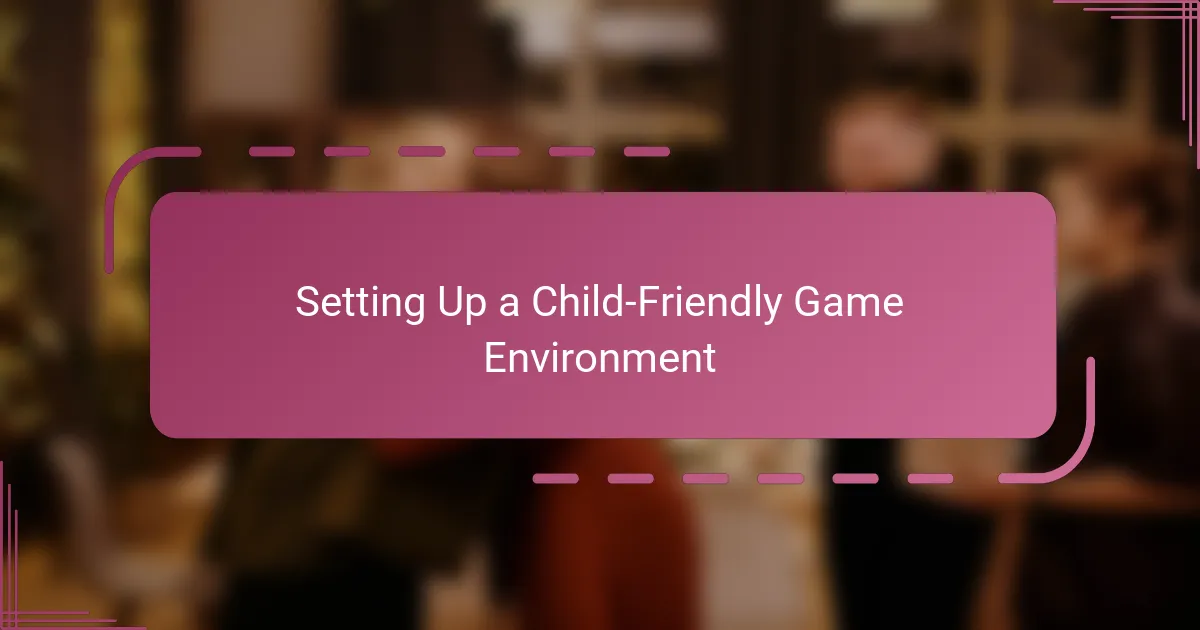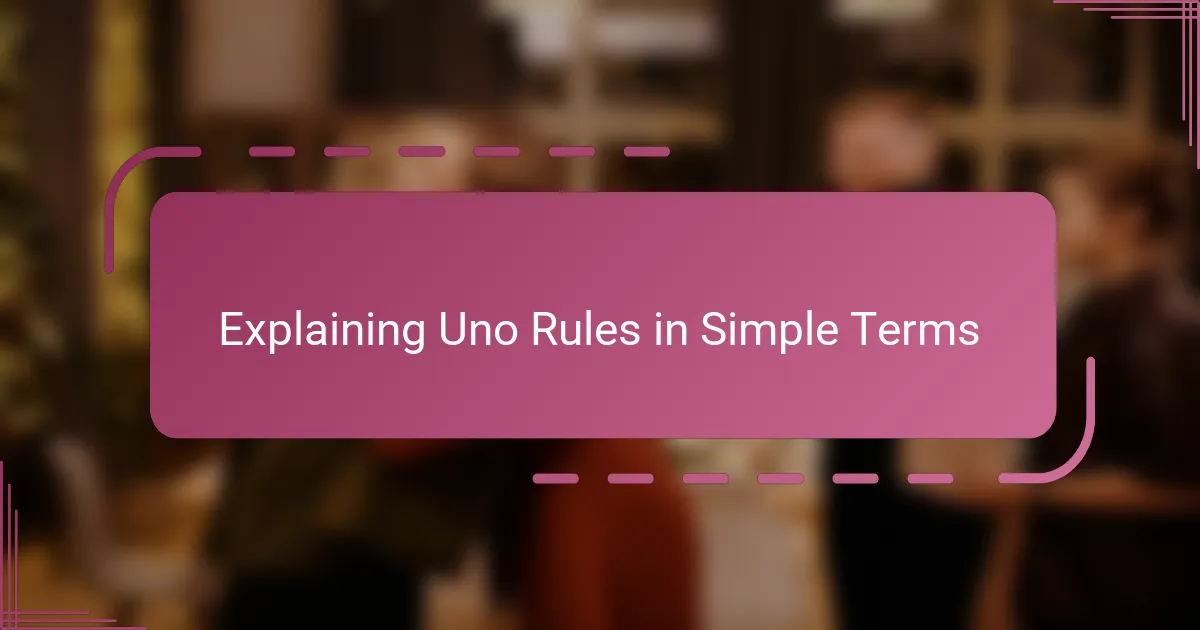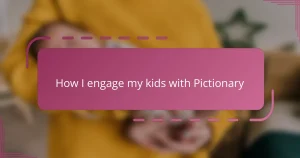Key takeaways
- Uno is a fun card game that promotes strategic thinking, patience, and family bonding through friendly competition.
- Introducing Uno around age 5 helps children understand colors and numbers while ensuring a positive experience by adapting the pace to their readiness.
- Creating a comfortable game environment with proper lighting and snacks enhances focus and makes game sessions enjoyable.
- Encouraging fair play and patience helps children develop emotional intelligence and reinforces the importance of respect during gameplay.

What is Uno and Its Benefits
Uno is a simple card game that combines colors and numbers in a way that immediately grabs kids’ attention. From my experience, its straightforward rules made it easy for my children to join in without frustration.
What I love most about Uno is how it naturally encourages my kids to think ahead and develop strategy, all while having fun. Isn’t it amazing how a game can sneak in so much learning about patience, taking turns, and even handling both winning and losing gracefully?
Beyond the gameplay, Uno creates moments where laughter and friendly competition bring our family closer. I often find myself cherishing these small but meaningful interactions that go beyond just playing cards.

Choosing the Right Age to Introduce Uno
Deciding when to introduce Uno to my children wasn’t something I rushed. I found that around age 5, they were just starting to recognize colors and numbers clearly enough to enjoy the game without feeling overwhelmed. Have you ever noticed how kids at that age begin to grasp simple patterns? That moment felt perfect for us.
Of course, every child is different. My younger one needed a bit more patience before fully getting the hang of the rules, but starting with basic turns helped build confidence. Watching their eyes light up when they could proudly say, “I know this card!” was a rewarding sign that the timing was right.
Sometimes, I wondered if introducing the game too early would lead to frustration, but I quickly learned that adapting the pace made all the difference. Isn’t it amazing how being mindful of your child’s readiness can turn a simple game into a cherished experience? For me, it’s all about balancing challenge and fun at just the right age.

Setting Up a Child-Friendly Game Environment
Creating a cozy and inviting space is essential when introducing Uno to kids. I always pick a quiet corner with comfy seating where distractions are minimal. Doesn’t it make a difference when children feel relaxed and focused, rather than rushed or overwhelmed?
I also make sure the lighting is soft but bright enough for little eyes to clearly see the colorful cards. From my experience, proper lighting prevents squinting and keeps the game flow smooth, which makes the whole experience more enjoyable for everyone.
Lastly, having small snacks and drinks nearby, but not too close to the cards, adds a touch of comfort without risking a mess. I find that these thoughtful details turn a simple game session into a warm family ritual that kids actually look forward to. Have you noticed how these little touches can build excitement before the game even begins?

Explaining Uno Rules in Simple Terms
When I explain the rules of Uno to my kids, I keep it super simple: match the color or number on the top card to one in your hand and take turns playing. I find that breaking it down this way makes the game less intimidating and more inviting for them to jump in right away. Have you ever noticed how kids respond better when instructions feel like a friendly chat rather than a big list of rules?
I also highlight the special cards like Skip, Reverse, and Draw Two by turning them into little challenges. For example, I say, “If you play this card, the next player misses a turn!” Their eyes light up with excitement when they realize these cards shake up the game. It’s moments like this that make learning the rules feel fun rather than a chore.
Sometimes, I remind my children that the main goal is to be the first to get rid of all their cards, but that playing nicely and waiting your turn is just as important. When they see it as a game about both winning and sharing fun, it naturally shifts their focus and makes the experience better for everyone. Have you tried framing rules as part of a bigger lesson in patience and kindness? It really changes the vibe at our game table.

Engaging Children with Fun Variations
One way I keep my children excited about Uno is by introducing small twists to the standard rules. For example, we created a “Crazy Color Switch” round where certain cards let players swap hands, adding an unexpected surprise that keeps everyone on their toes. Have you ever noticed how a little unpredictability can turn a familiar game into a thrilling new adventure?
Sometimes, I add themed rounds based on what my kids are excited about at the moment—like a “Superhero Uno” where players can use special powers to skip or reverse turns differently. Seeing their imaginations spark as they combine storytelling with gameplay makes me realize how versatile Uno can be. Isn’t it wonderful when a simple game inspires creativity beyond just the cards?
I also found that shortening the rounds or playing with fewer cards keeps the game accessible during busy days or for younger kids. This flexibility means no one feels left out or overwhelmed, and the laughter never stops. Don’t you think games that adapt to kids’ moods are the ones that become family favorites?

Encouraging Fair Play and Patience
Encouraging fair play and patience has been one of the most rewarding parts of teaching my children Uno. I’ve noticed that when I gently remind them to wait for their turn and respect others’ moves, the game flows much smoother, and they seem more focused. Have you ever seen how a simple “your turn” prompt can calm the excitement and help kids catch their breath? It really sets a positive tone.
I also make it a point to celebrate acts of fairness, like when my kids don’t rush or try to sneak a card out of turn. Praising those moments reinforces that winning isn’t just about who finishes first, but how you play the game. From my experience, this patience spills over into other areas of their lives, which is a bonus I never expected.
Of course, patience doesn’t come naturally for little ones, so I try to model it myself—staying calm even when the game gets competitive. I often say, “It’s okay to feel excited, but let’s give everyone a chance.” Isn’t it interesting how kids pick up on our tone and emotions more than our words? That gentle example creates a family atmosphere where fairness feels like the real win.

Reflecting on Learning and Fun Experiences
Looking back on our first few Uno sessions, I remember how the mix of learning and laughter made each moment truly special. It wasn’t just about memorizing colors and numbers; it was those bursts of giggles when someone pulled off a clever move that made the game memorable. Have you ever noticed how those little victorious smiles reveal so much more than just a simple win?
What surprised me most was how quickly my children began to reflect on the game themselves—talking about their strategies and even calming down after a loss. It made me realize that these playful moments were quietly shaping their emotional intelligence. Don’t you think it’s amazing how a fun game can also teach resilience and empathy without feeling like a lesson?
Sometimes, when the game ended, we’d pause and chat about what we enjoyed or found tricky. Those conversations helped my kids connect the dots between playing and learning, turning a casual activity into a meaningful experience. Have you tried asking your kids what they learned during play? It often opens the door to deeper understanding, for both them and us.


